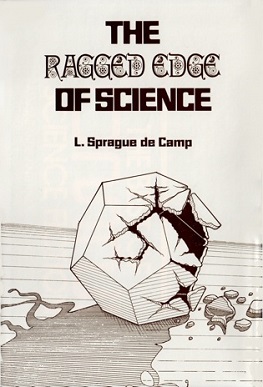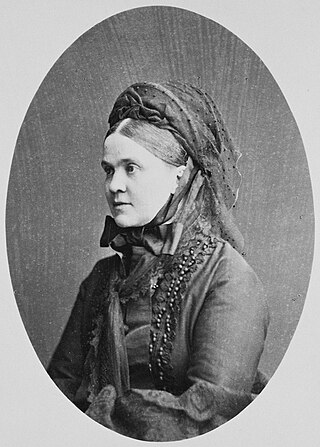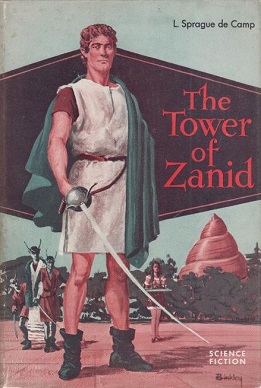Plot summary
In a future in which monarchy has made a comeback (even the United States has an elective king), Hollywood actor Claude Godwin has become bored with his career. Wandering along the California coast with a friend, he encounters a nude woman who has fallen asleep sunbathing on a secluded beach, On a whim, the two play a practical joke, photographing an equally nude Claude beside her with her own camera. When she wakes and has her pictures developed, they figure she will be in for a rude surprise.
The joke proves to be on Claude when some time later he is kidnapped to Greenland. The sleeping woman, it transpires, is that nation's Crown Princess Karen, in California incognito while attending college. As she sent her film home to be developed, Claude's private joke has blown up into a major scandal, and the straitlaced Greenlanders are not amused. By order of the dictatorial prime minister Anker Gram, he is to wed the recalled Princess Karen forthwith! Moreover, Claude finds himself a pawn in a scheme by Gram to bring about a union of Greenland with Great Britain. By means of a newly invented device that can peer into the past, it has been determined that Claude is the legitimate descendant and heir of Harold Godwinson, the last Saxon king of England, who had been overthrown by William the Conqueror at the Battle of Hastings in 1066. He thus has a claim to the British throne antedating that of all subsequent holders.
Claude quickly discovers himself enmeshed in a tangled web of conspiracies involving Gram's power-play, with various parties seeking to contact and enlist him to their sides be means of recorded message capsules smuggled to him inside gumdrops. Some of them have more malevolent intentions; there is one attempt to murder him with a poisoned gumdrop (it sickens one of his police guards instead), and another to have him destroy the temporal viewer with an explosive candy bar (suspicious on account of the assassination attempt, he throws it into the sea instead). As events progress, he finds himself allied with Princess Karen to forestall their forced marriage, Greenland's King Edvard III, who hopes Claude can help him exchange his throne for a movie career, and Viggo and Karl Bruun, inventors of the temporal viewer, who want their device used for historical research rather than political machinations. In opposition are Werner von Wittelsbach, the Jacobite pretender to the British throne who is living in exile in Greenland, and Thor Thomsen, a corrupt businessman backing Gram who fears the Bruuns' machine will expose his criminal dealings. But as long as Claude remains captive to Gram, the prime minister holds all the cards.
Things come to a head at the betrothal dinner held for Claude and Karen, at which everyone gets plastered. In the aftermath, Wittelsbach takes advantage of the drunkenness of Claude's guard to challenge the captive actor to a sword duel. The guard is injured trying to intervene, which lets Claude get the upper hand. With the others unconscious, he gets himself free of his restraining device, links up with the royals and the Bruuns, and with them commandeer a helicopter in which to make a break for Canada with the temporal viewer. Thomsen and Wittelsbach soon follow in a plane and force them down in Labrador. The villains smash the machine and prepare to murder Claude and the Bruuns, but the tables are turned when King Edvard manages to shoot Wittelsbach and get the drop on Thomsen.
Later, back in California, ex-King Edvard is happy at having landed a bit part in a movie thanks to Claude's influence, the Bruuns are restoring their machine, and Claude and Karen, their former aversion to being forced to wed notwithstanding, are dating. Claude has also learned that he is not after all the last heir of Harold Godwinson and the Saxon claim to the British throne; while the temporal viewer is real, that bit of data had been faked by Gram.

The House of Wittelsbach is a former Bavarian dynasty, with branches that have ruled over territories including the Electorate of Bavaria, the Electoral Palatinate, the Electorate of Cologne, Holland, Zeeland, Sweden, Denmark, Norway, Hungary, Bohemia, and Greece. Their ancestral lands of Bavaria and the Palatinate were prince-electorates, and the family had three of its members elected emperors and kings of the Holy Roman Empire. They ruled over the Kingdom of Bavaria which was created in 1805 and continued to exist until 1918.

Lyon Sprague de Camp was an American author of science fiction, fantasy and non-fiction literature. In a career spanning 60 years, he wrote over 100 books, including novels and works of non-fiction, including biographies of other fantasy authors. He was a major figure in science fiction in the 1930s and 1940s.

The Battle of Stamford Bridge took place at the village of Stamford Bridge, East Riding of Yorkshire, in England, on 25 September 1066, between an English army under King Harold Godwinson and an invading Norwegian force led by King Harald Hardrada and the English king's brother Tostig Godwinson. After a bloody battle, both Hardrada and Tostig, along with most of the Norwegians, were killed. Although Harold Godwinson repelled the Norwegian invaders, his army was defeated by the Normans at Hastings less than three weeks later. The battle has traditionally been presented as symbolising the end of the Viking Age, although major Scandinavian campaigns in Britain and Ireland occurred in the following decades, such as those of King Sweyn Estrithson of Denmark in 1069–1070 and King Magnus Barefoot of Norway in 1098 and 1102–1103.
Tostig Godwinson was an Anglo-Saxon Earl of Northumbria and brother of King Harold Godwinson. After being exiled by his brother, Tostig supported the Norwegian king Harald Hardrada's invasion of England, and was killed alongside Hardrada at the Battle of Stamford Bridge in 1066.

The Battle of Fulford was fought on the outskirts of the village of Fulford just south of York in England, on 20 September 1066, when King Harald III of Norway, also known as Harald Hardrada, a claimant to the English throne and Tostig Godwinson, his English ally, fought and defeated the Northern Earls Edwin and Morcar.

Franz Bonaventura Adalbert Maria Herzog von Bayern, commonly known by the courtesy title Duke of Bavaria, is the head of the House of Wittelsbach, the former ruling family of the Kingdom of Bavaria. His great-grandfather King Ludwig III was the last ruling monarch of Bavaria, being deposed in 1918.

Lest Darkness Fall is a 1939 alternate history science fiction novel by the American author L. Sprague de Camp. Alternate history author Harry Turtledove has said it sparked his interest in the genre as well as his desire to study Byzantine history.

The Ragged Edge of Science is a science book by L. Sprague de Camp, illustrated by Don Simpson. It was first published by Owlswick Press in 1980.

The Undesired Princess is a 51,000 word fantasy novella by American writer L. Sprague de Camp. It was first published in the fantasy magazine Unknown Worlds for February 1942. It was published in book form by Fantasy Publishing Company, Inc. in 1951. The book version also includes the 10,000 word fantasy short story "Mr. Arson", first published in Unknown for December 1941. The book was bound together with Stanley G. Weinbaum's The Dark Other in the omnibus collection Fantasy Twin by the same publisher in 1953. The title story was also published in paperback by Baen Books in 1990 together with David Drake's story The Enchanted Bunny, under the combined title The Undesired Princess & the Enchanted Bunny.

The Honorable Barbarian is a fantasy novel by American writer L. Sprague de Camp, the fifth and final book of his Novarian series. It is a sequel both to the "Reluctant King" trilogy and to the Novarian sequence's only short story, "The Emperor's Fan". It was first published in hardcover by Del Rey Books in July 1989, with a limited edition hardcover following from The Easton Press in its "Signed First Editions of Science Fiction" series in August of the same year. Another hardcover edition issued by Del Rey in conjunction with the Science Fiction Book Club appeared in January 1990. The first paperback edition was issued by Del Rey in May 1990. The novel has also been translated into French. An E-book edition was published as The Honourable Barbarian by Gollancz's SF Gateway imprint on September 29, 2011 as part of a general release of de Camp's works in electronic form.

The Hand of Zei is a science fiction novel by American writer L. Sprague de Camp, the second book of his Viagens Interplanetarias series and its subseries of stories set on the fictional planet Krishna. The book has a convoluted publication history.

Sprague de Camp's New Anthology of Science Fiction is a collection of science fiction stories by American writer L. Sprague de Camp, edited by H. J. Campbell. It was first published in both hardcover and paperback in 1953 by Panther Books.

The Virgin & the Wheels is a collection of two short science fiction novels by L. Sprague de Camp, published in paperback by Popular Library in 1976. An E-book edition was published by Gollancz's SF Gateway imprint on September 29, 2011 as part of a general release of de Camp's works in electronic form.

Conan the Liberator is a fantasy novel by American writers L. Sprague de Camp and Lin Carter, featuring Robert E. Howard's sword and sorcery hero Conan the Barbarian. It was first published in paperback by Bantam Books in February 1979, and reprinted in 1982; later paperback editions were issued by Ace Books. The first hardcover edition was published by Tor Books in June 2002; a trade paperback followed from the same publisher in 2003. The first British edition was from Sphere Books. The novel was later gathered together with Conan the Swordsman and Conan and the Spider God into the omnibus collection Sagas of Conan.

The Tritonian Ring is a heroic fantasy novel written by L. Sprague de Camp as part of his Pusadian series. It was first published in the magazine Two Complete Science Adventure Books for Winter, 1951, and first appeared in book form in de Camp's collection The Tritonian Ring and Other Pusadian Tales. Its first publication as a stand-alone novel was as a paperback by Paperback Library in 1968; the first hardcover edition was from Owlswick Press in 1977. An E-book edition was published as The Tritonian Ring and Other Pasudian [sic] Tales by Gollancz's SF Gateway imprint on September 29, 2011 as part of a general release of de Camp's works in electronic form.

Adelaide of Löwenstein-Wertheim-Rosenberg was the wife of the deposed king Miguel I of Portugal. As a widow, she secured advantageous marriages for their six daughters.

The Tower of Zanid is a science fiction novel by American writer L. Sprague de Camp, the sixth book of his Viagens Interplanetarias series and the fourth of its subseries of stories set on the fictional planet Krishna. Chronologically it is the seventh Krishna novel. It was first published in the magazine Science Fiction Stories for May 1958. It was first published in book form in hardcover by Avalon Books, also in 1958, and in paperback by Airmont Books in 1963. It has been reissued a number of times since by various publishers. For the later standard edition of Krishna novels it was published together with The Virgin of Zesh in the paperback collection The Virgin of Zesh & The Tower of Zanid by Ace Books in 1983. An E-book edition was published by Gollancz's SF Gateway imprint on September 29, 2011 as part of a general release of de Camp's works in electronic form. The novel has also been translated into Italian and German.
Bibliography of science fiction, fantasy, historical fiction and nonfiction writer L. Sprague de Camp:

In the history of Portugal, a Miguelist is a supporter of the legitimacy of the king Miguel I of Portugal and his descendants.

"In-Group" is a science fiction short story by L. Sprague de Camp. It was first published in the magazine Marvel Science Fiction for May, 1952. and later reprinted in the magazine Skyworlds for February 1978. It first appeared in book form in the collection A Gun for Dinosaur and Other Imaginative Tales. The story has been translated into Italian and German.


















